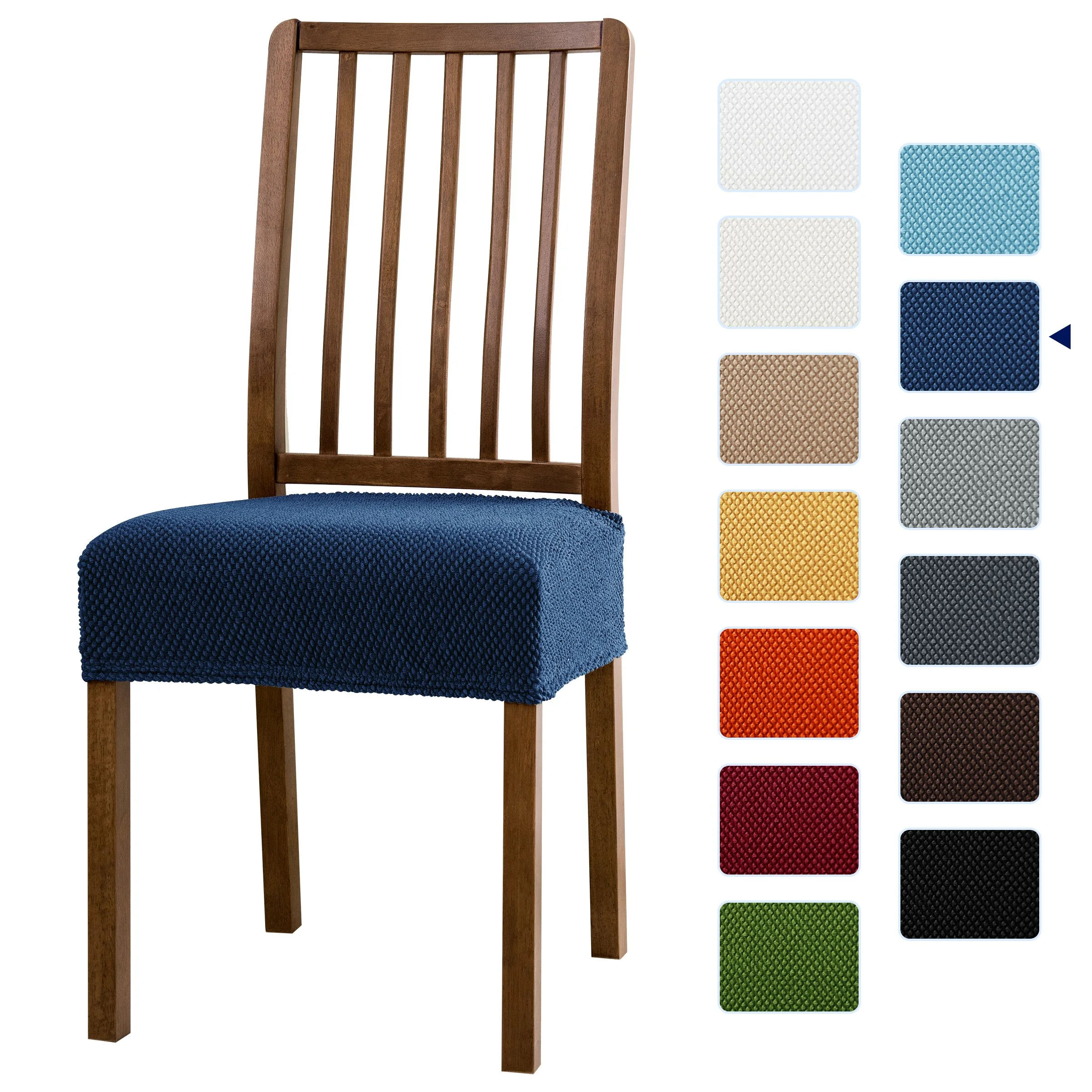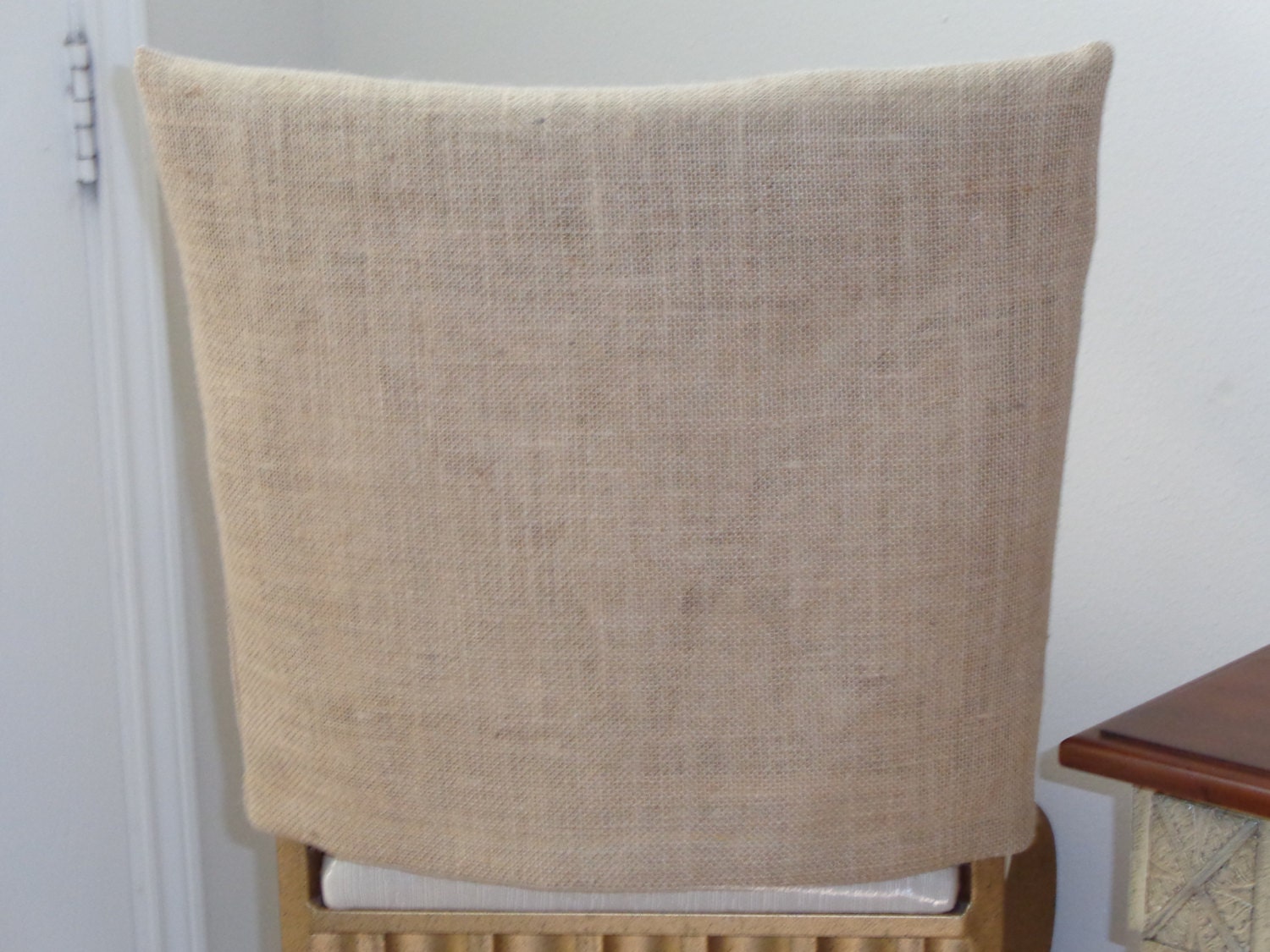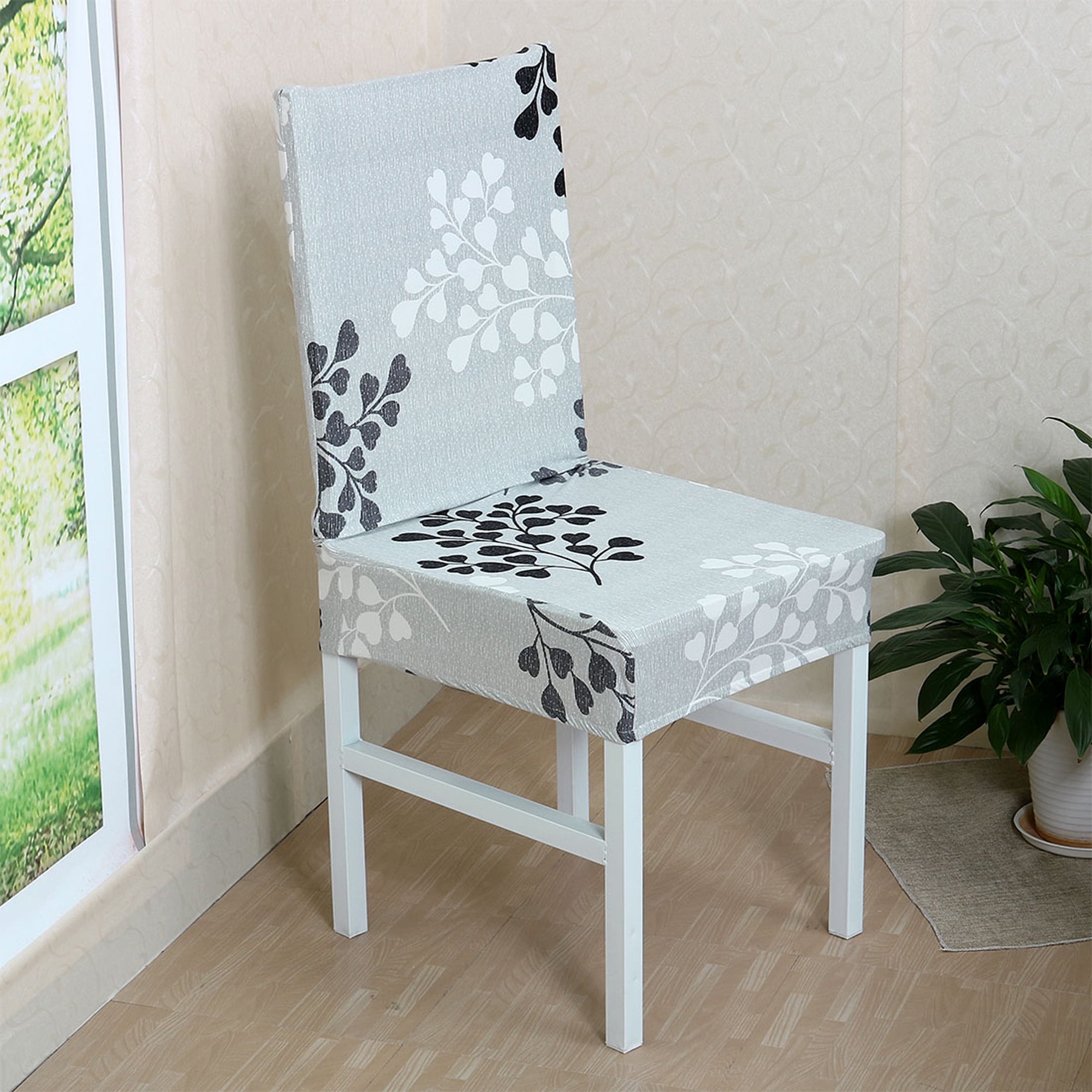Types of Dining Chair Back Covers

Choosing the right dining chair back covers can dramatically transform the look and feel of your dining area. From enhancing durability to adding a pop of personality, the options are surprisingly diverse. This post will explore the various types of materials, styles, and price points to help you make an informed decision.
Dining Chair Back Cover Materials
The material you choose significantly impacts the durability, maintenance requirements, and overall aesthetic of your chair covers. Popular options include fabric, leather, and vinyl, each with its own set of advantages and disadvantages.
Fabric covers offer a wide range of textures, patterns, and colors. Cotton is a popular choice for its breathability and affordability, but it may require more frequent cleaning and is less durable than other options. Linen offers a luxurious, slightly textured look, but it can wrinkle easily and be more prone to staining. Polyester blends are generally more durable and stain-resistant, making them a practical option for busy households. Velvet adds a touch of opulence, but requires more careful cleaning.
Leather covers exude sophistication and luxury. Genuine leather is incredibly durable and develops a unique patina over time, adding character. However, it’s a significant investment and requires specialized cleaning products. Faux leather offers a more affordable alternative, mimicking the look of genuine leather with greater ease of maintenance. However, it may not last as long as genuine leather and might not be as breathable.
Vinyl covers are known for their durability and easy maintenance. They are highly resistant to stains, spills, and wear and tear, making them ideal for homes with children or pets. However, vinyl can feel less luxurious than fabric or leather and may not be as breathable. The appearance can be quite plastic-like, depending on the quality.
Dining Chair Back Cover Styles
The style of your chair back covers plays a crucial role in setting the overall tone of your dining space. Plain covers offer a minimalist and versatile look, allowing you to easily incorporate them into various design schemes. Patterned covers, on the other hand, can add personality and visual interest. Floral patterns create a romantic ambiance, while geometric patterns provide a modern touch. Textured covers, such as those with a boucle or tweed finish, add depth and visual complexity.
For example, plain linen covers in a neutral color like beige or gray would complement a minimalist or Scandinavian design scheme. Bold geometric patterned covers could enhance a contemporary or eclectic style. Floral patterned covers in pastel shades would suit a romantic or shabby chic aesthetic. Textured covers in a rich, dark color would add a touch of drama to a traditional or Victorian-style dining room.
Dining Chair Back Cover Price and Lifespan Comparison, Dining chair back covers only
The price and lifespan of dining chair back covers vary significantly depending on the material and style. Below is a table summarizing these factors:
| Material | Style | Price Range | Typical Lifespan (Years) |
|---|---|---|---|
| Cotton | Plain | $10-$25 per cover | 2-3 |
| Polyester Blend | Patterned | $15-$40 per cover | 3-5 |
| Linen | Plain | $20-$50 per cover | 3-4 |
| Velvet | Textured | $30-$60 per cover | 4-6 |
| Faux Leather | Plain | $25-$50 per cover | 4-6 |
| Genuine Leather | Plain | $50-$150+ per cover | 8-15+ |
| Vinyl | Plain | $15-$35 per cover | 5-7 |
Finding and Choosing the Right Covers: Dining Chair Back Covers Only

Transforming your dining chairs with new back covers is a simple yet effective way to update your dining space. Choosing the right covers involves careful measurement, consideration of style and material, and a straightforward installation process. Let’s dive into the details to ensure a perfect fit and a stunning result.
Measuring Dining Chair Backs
Accurate measurements are crucial for a proper fit. Improper measurements can lead to ill-fitting covers that look sloppy and may not stay in place. Here’s how to measure your chair backs effectively:
First, identify the key areas needing measurement: the height, width at the widest point, and the depth (thickness) of the chair back. Imagine drawing a rectangle around the chair back’s main surface. The height is the distance from the top to the bottom of this rectangle. The width is the longest distance across the rectangle. The depth is the distance from the front to the back of the chair back at its widest point.
To measure the height, place a measuring tape along the chair back from the topmost point to the bottommost point, ensuring the tape is held straight and taut. Record this measurement. For the width, place the tape across the widest part of the chair back, ensuring it’s parallel to the ground. Note this measurement. Finally, to measure the depth, measure the thickness of the chair back at its widest point. Remember to always measure in inches or centimeters, depending on your preferred unit. For example, a chair back might measure 18 inches high, 14 inches wide, and 2 inches deep. These measurements will guide you in selecting appropriately sized covers.
Selecting Chair Back Covers: Factors to Consider
Choosing the right chair back covers involves considering several key factors that will impact both the look and longevity of your covers.
Color and Pattern: The color and pattern of your chair back covers should complement your existing dining room décor. Consider the overall style of your room – is it modern, traditional, rustic, or something else? A bold pattern might work well in a vibrant space, while a more subtle pattern or solid color might be better suited to a more formal setting. For instance, a classic floral pattern could enhance a traditional dining room, whereas a geometric pattern could add a modern touch.
Material Suitability: The material of your chair back covers is crucial for durability and ease of maintenance. For high-traffic areas, consider durable fabrics like polyester blends or canvas, which are resistant to stains and wear. For formal dining rooms, you might opt for more luxurious materials such as velvet or linen, which add a touch of elegance but require more careful cleaning and maintenance. Think about the level of wear and tear your covers will endure. A family with young children might prefer more resilient materials than a household without children.
Installing Dining Chair Back Covers: A Step-by-Step Guide
Once you have your covers, installing them is usually straightforward. Most chair back covers have elastic edges or ties to secure them. However, it is always best to check the manufacturer’s instructions.
1. Preparation: Lay the cover flat on a surface. Turn the chair back upside down and place it on top of the cover. Center the chair back on the cover.
2. Securing the Cover: Carefully pull the cover over the chair back, ensuring it is evenly distributed. If your cover has elastic edges, the elasticity will help it to fit snugly. If it has ties, carefully tie them together securely at the back of the chair.
3. Adjusting and Finishing: Once the cover is secured, adjust it to ensure it sits smoothly and neatly. Tuck any excess fabric neatly to create a clean finish. Make sure there are no wrinkles or creases.
Following these steps will ensure your chair back covers are fitted correctly and look professionally installed, transforming your dining chairs and enhancing the overall aesthetic of your dining room.
Care and Maintenance of Chair Back Covers

Protecting your dining chair back covers is crucial for maintaining their appearance and extending their lifespan. Regular cleaning and proper handling will prevent damage and keep your chairs looking their best for years to come. This section details effective care strategies for various cover materials and addresses common issues.
Cleaning and Maintaining Different Cover Types
Different materials require different cleaning methods. Fabric covers, for example, may need gentle hand-washing or machine washing depending on the fabric type and care instructions. Leather and vinyl covers, on the other hand, benefit from specialized cleaning products to maintain their shine and suppleness.
- Fabric Covers: Vacuum regularly to remove dust and debris. Spot clean spills immediately using a mild detergent and cool water. For more extensive cleaning, check the care label for washing instructions. Air dry to prevent shrinkage or damage.
- Leather Covers: Use a soft, damp cloth to wipe away dust and dirt. Avoid harsh chemicals or abrasive cleaners. Condition leather covers periodically with a leather conditioner to maintain their suppleness and prevent cracking.
- Vinyl Covers: Wipe clean with a damp cloth and mild soap. Avoid abrasive cleaners or harsh chemicals, which can dull the finish. A vinyl cleaner can be used for stubborn stains, following the product instructions carefully.
Addressing Common Problems
Several issues can affect chair back covers over time. Stains, tears, and fading are common occurrences that can be addressed with proper care and repair techniques.
- Stains: Act quickly to treat stains. Blot (don’t rub) spills immediately. Use appropriate stain removers depending on the material and stain type. Always test any cleaning solution on a hidden area first.
- Tears: Small tears in fabric covers can often be repaired with fabric glue or a sewing kit. Larger tears might require professional repair or replacement of the cover. For leather or vinyl, professional repair is usually necessary.
- Fading: Avoid prolonged exposure to direct sunlight, which can cause fading. Use curtains or blinds to filter sunlight. For faded covers, consider replacement if the fading is significant and unfixable.
Infographic: Extending the Lifespan of Dining Chair Back Covers
The infographic would be a visually appealing vertical layout, divided into three sections. The first section, “Daily Care,” would depict a person gently vacuuming a chair cover and wiping a spilled liquid immediately, with text emphasizing regular dusting and immediate spot cleaning. The second section, “Periodic Maintenance,” would illustrate a person carefully cleaning a chair cover with appropriate cleaning solutions and conditioning a leather cover, accompanied by text describing appropriate cleaning methods for different materials (fabric, leather, vinyl) and the frequency of deep cleaning. The final section, “Proper Storage and Handling,” would show the correct way to fold and store chair covers (perhaps in a breathable fabric bag), avoiding sharp objects and direct sunlight, with text emphasizing the importance of storing covers away from moisture and extreme temperatures. The infographic would use clear icons and concise text to communicate these key steps effectively.
